
Selects: Top 5 Camera Gear for Music Photography
Published 17 December 2021 by MPB
Music photographer Jamie MacMillan has captured some of the iconic artists in the world, including Foo Fighters, Green Day and Metallica, as well as exciting UK acts such as IDLES, Sports Team and Fontaines D.C. We heard from him about the five essential pieces of kit he would recommend for capturing unforgettable live music photography. Over to you, Jamie.
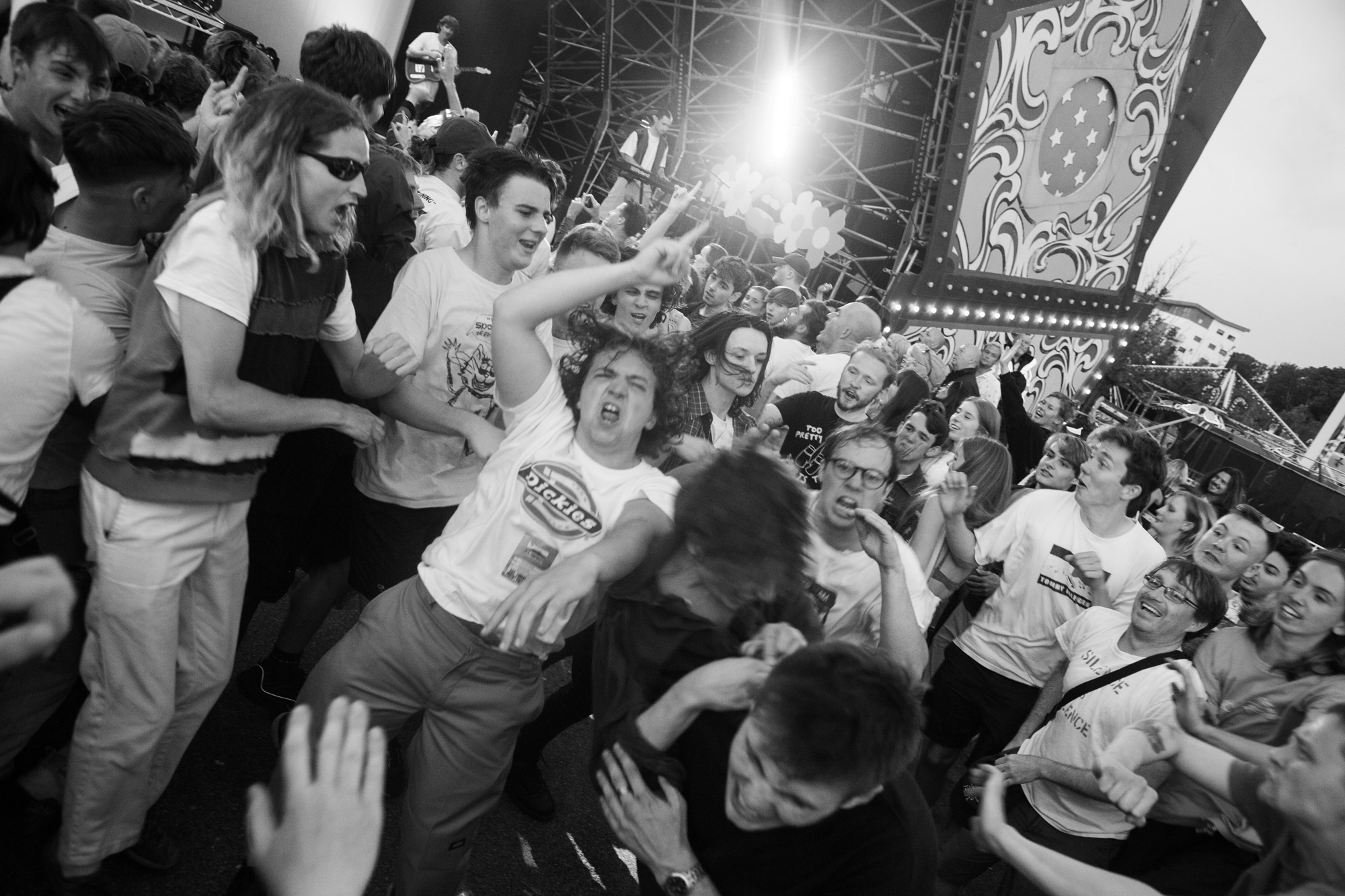
1. Canon EOS 5D Mark III
After muddling (badly, in truth) through early shows shooting on a Canon EOS 50D, I remember the first gig where I used what was to me a ‘grown-up’ camera. Five years later, I cannot bring myself to swap out the Canon EOS 5D Mark III—I am still using the very same unit, with an identical backup model always prepped to go. For me, it’s the ease of use and durability that makes it impossible to replace right now. Everything is right there. I shoot shows fully manually, which obviously presents some challenges with fast-moving artists and frenetic light shows. Plus, my style of shooting means I like to get right in the middle of things as I shoot from deep in the crowd, so I love that it’s durable enough to cope with moshpits, bumps and the odd flying pint.
It is also the perfect size for that style of shooting for me, as I tend to go ‘strapless’ and just hold it by the curved edge in one hand to shoot. As new models come out and prices on this version drop, I would recommend this unit to anyone wanting to get started in live music photography. Ridiculously easy to pick up and shoot with, plus rewarding for those who want to dig into and finesse its settings.
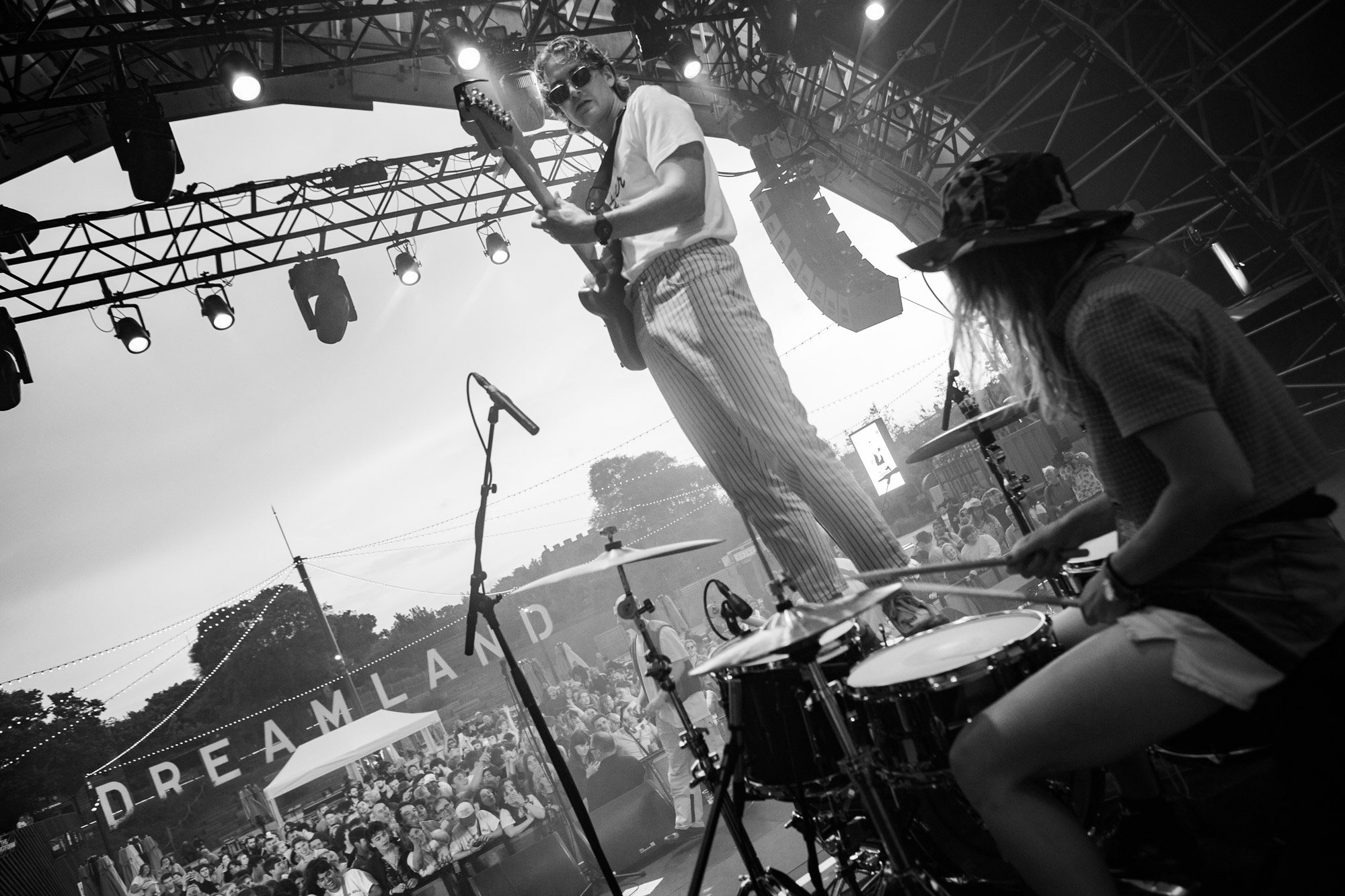
2. Canon EF 17-40mm f/4 L USM
It sounds obvious but when you begin to find your style in live music photography, the lenses you choose for the job are vital and will define what images you get. Some photographers love classically tight crops on the performer but for me, I shoot shows that are usually high in energy and high in chaos—bands like IDLES, Sports Team and the like, where the action happening around the edges of the frame are at least as interesting and exciting as in the centre. So I tend to go as wide as possible, without warping the image.
The 17-40mm f/4 L USM is my go-to for live shows for that reason, combined with a flash (more on that later) to get the big epic crowd shots either from on-stage or from the back of the room—or in the middle of the crowd, where it’s important to capture as many of the excited faces as possible. All of my favourite shots have been taken with this lens, I believe it really shows the scale of what is happening. Most music artists want live photography to capture that excitement rather than up-close pictures of their faces for the simple reason that they get so many of them presented to them after each gig. Going wide, and showing either the scale or the space, sets the images apart.
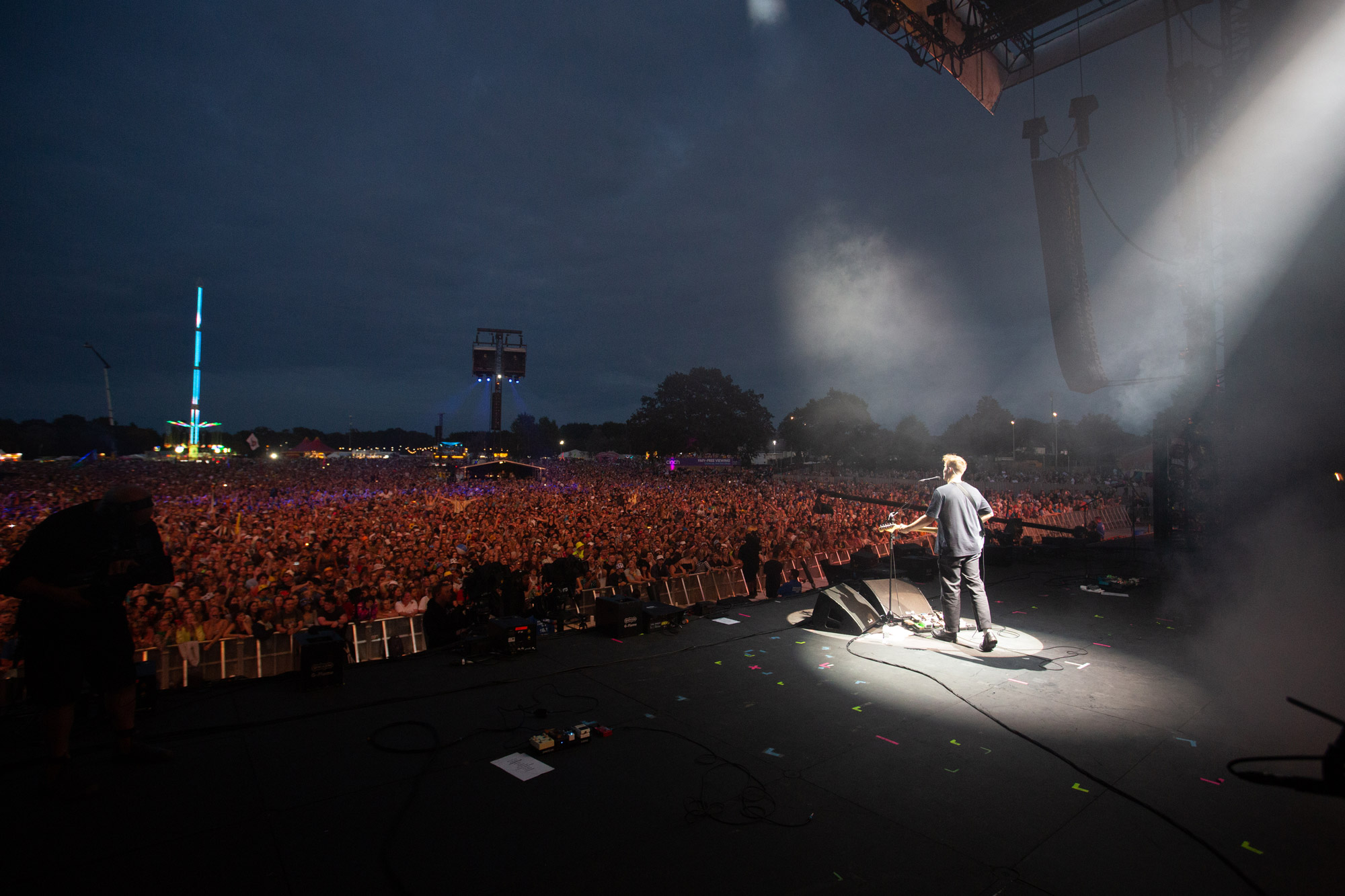
3. Canon EF 50mm f/1.8 STM
Having said all that, it almost feels counter-intuitive to choose a 50mm prime as another key item. But if the years of shooting live shows have taught me anything, it’s that some artists really, really like the lights turned off. While it is fine to use flash at some gigs, that’s not a given for all of them. And when the setting is an intimate one, the last thing anybody needs is a great big flash firing off all the time. The 50mm f/1.8 STM is ridiculously useful in low light, as you would expect with that F-stop, and is worth the sacrifice in the flexibility of scale and variety of shots. I don’t find it too much of an issue, as I am a photographer who ‘roams’ during a show, rather than staying close, so I can still find the angles. It’s also dead handy for me as a touring photographer, capturing the behind-the-scenes shots in a reportage style—small enough to be subtle and unobtrusive, sharp enough to capture everything that’s needed. I never leave home without this one. It’s always produced with a huge sigh of relief when the artists have decided on a ‘moody’ ambience, or where there is no lighting on their faces.
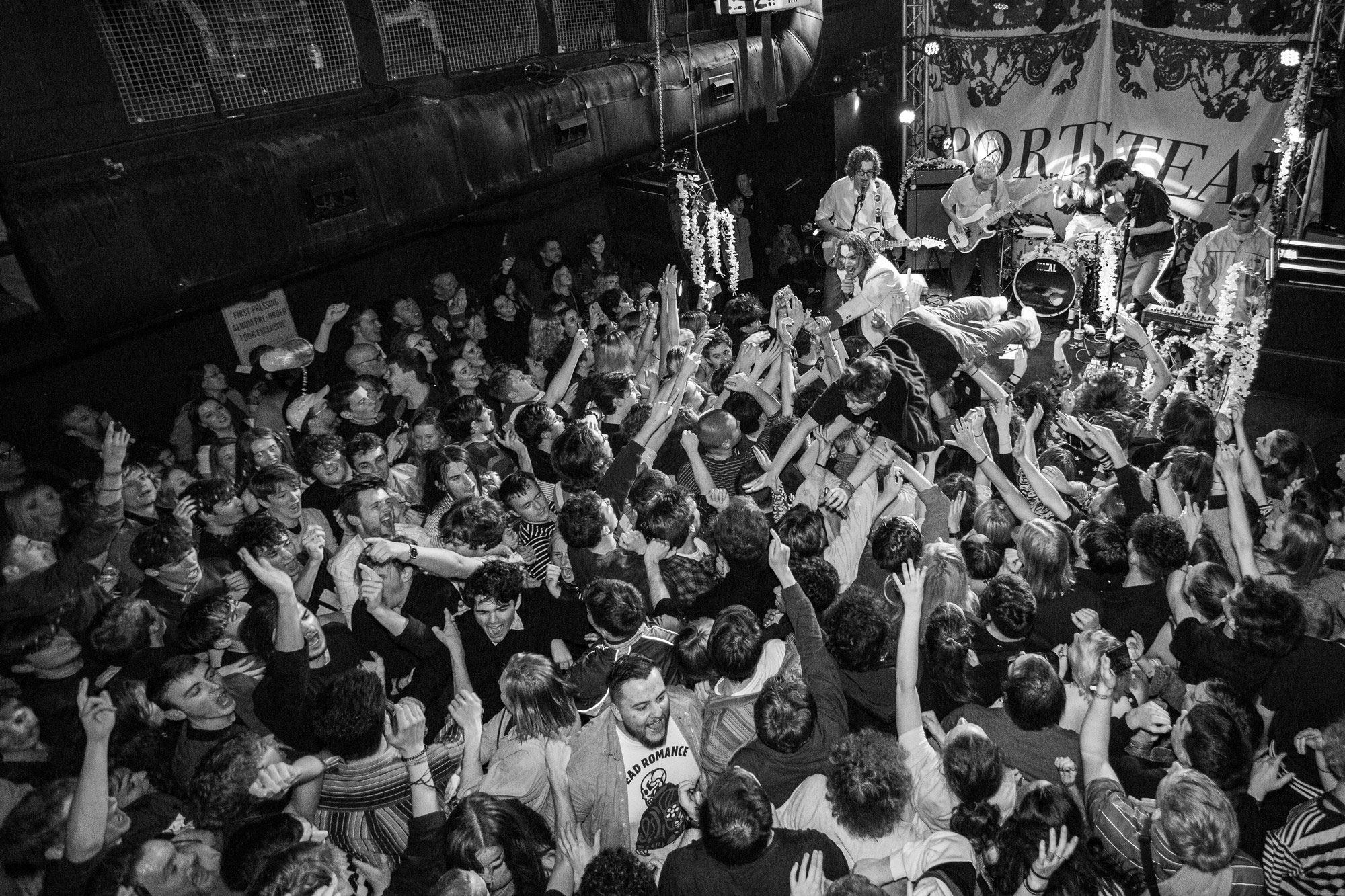
4. Canon Speedlite 430EX III-RT
Speed is everything with live music photography. To capture all of the intensity and freneticism of the moshpits, it’s vital to have a fast-firing and fast-charging flash. If the worst feeling in live music is missing a focus on something exciting like a ‘jump shot’ happening on stage, then the feeling of missing something in the crowd because the flash is still charging is up there! The Canon 430III-RT is fab for what I need, and again, its durability is a huge plus for me. In five years of shooting from the centre of moshpits, it has reacted superbly to all of the jostlings—though my height helps keep it out of range of most crowd dangers! I combine it with what is in reality a fairly cheap diffuser bowl that you can easily source online, a great find which really spreads the light out equally across wide spaces. Again, this is really useful with my crowd shots as I don’t want the light to drop off too close to the camera. Having said that, for something a bit more intimate, then its in-built catchlight panel is great for portraits and behind-the-scenes work. Combined with a fast-working SD card, this all adds up to a pretty unbeatable combo of unit and kit.
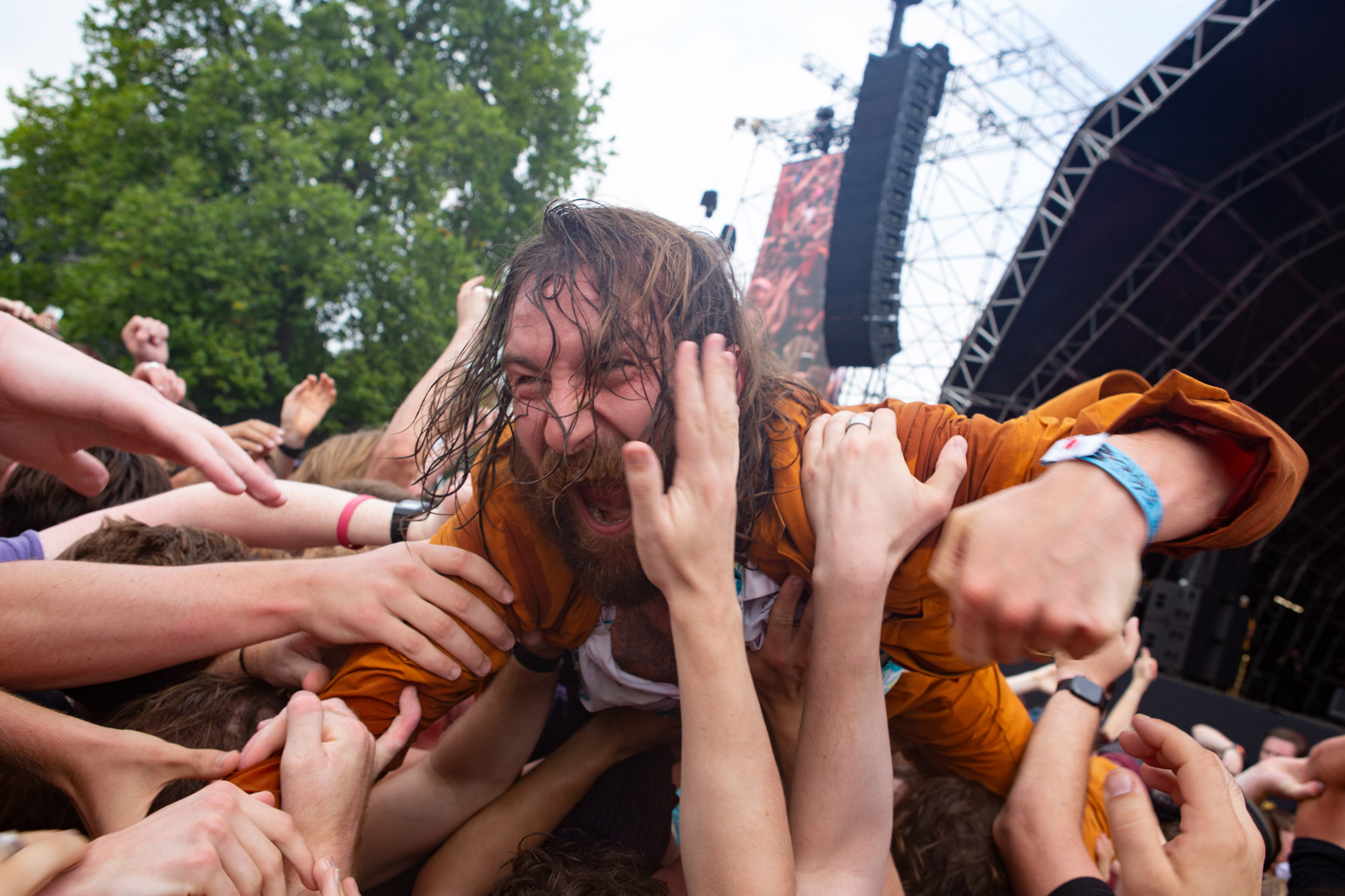
5. Tamrac Adventure/Expedition Bag
Travelling as any kind of photographer isn’t light work, and live music is no different. Add in the very high likelihood that flying liquids will land in the exact place that you’re likely to be standing, and it’s pretty obvious that you need something strong, comfortable and padded to store your kit in. For any standard gig, I will bring four or five different lenses as well as two bodies. For a tour or festival shoot, you are also looking at packing chargers, spare batteries, cleaning kit, waterproof bags, etc. I am currently using an Expedition bag for all of this, but can also highly recommend the Tamrac 5549 Adventure 9. It’s easy and safe to store lenses in, and it’s vitally easy to get access when you may need a rapid lens change—which happens more often than you’d imagine! Extremely comfortable and sturdy, it’s a real gift on long festival weekends when your body will ache in places that you didn’t know existed by Sunday. So, just like comfortable shoes and wearing all black, having a comfortable bag like this is an absolute must for any music photographer.
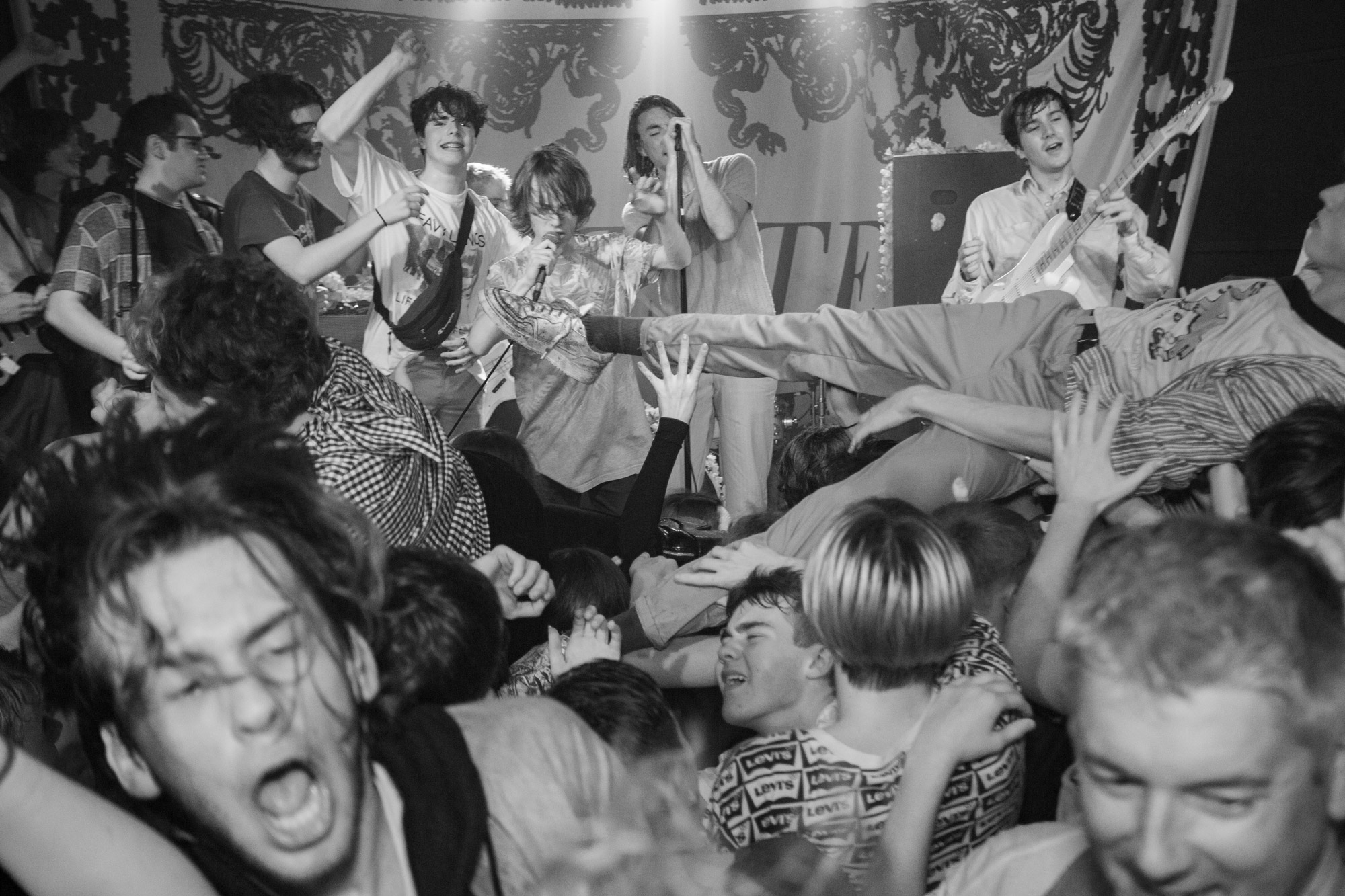
Looking for more music photography content?
This article is part of the MPB Guide to Concert and Music Photography, our comprehensive look at how to get started in music photography, with camera recommendations, tips, and interviews with experts.
You can sell or trade your camera kit to MPB. Get a free instant quote, get free insured shipping to MPB and get paid within days.